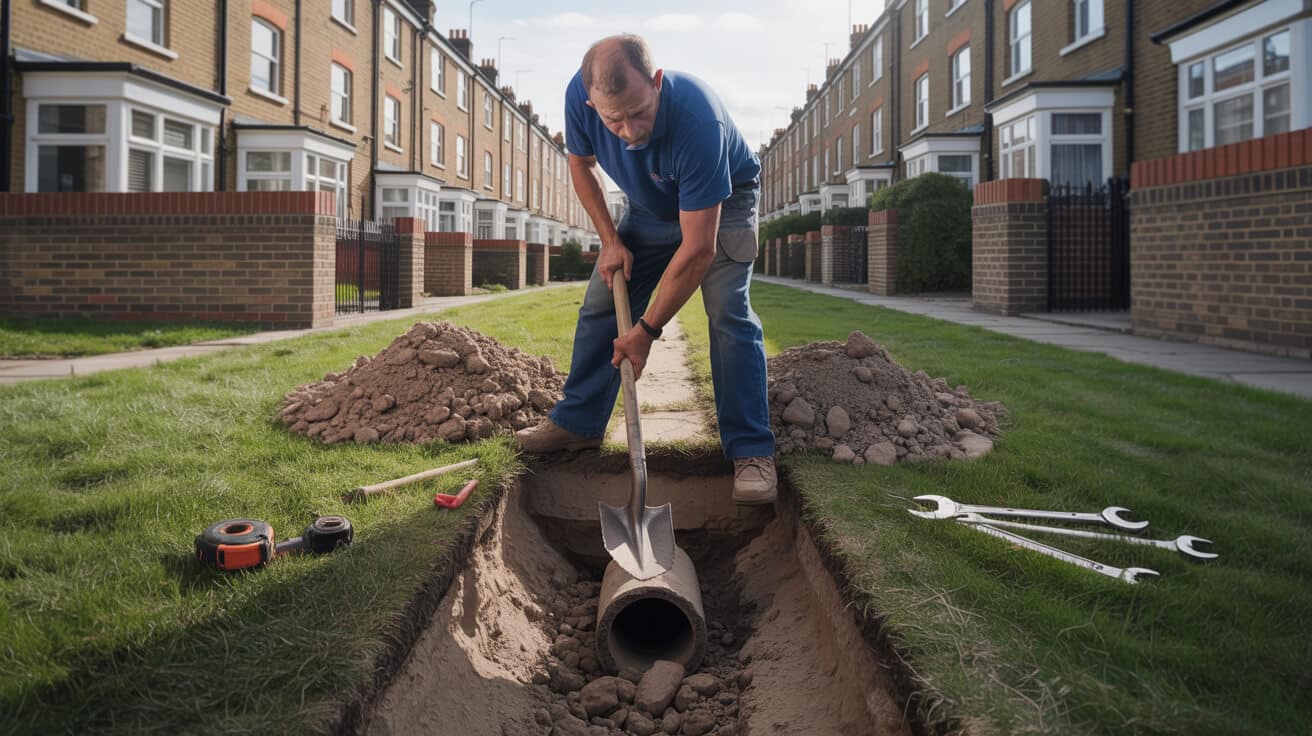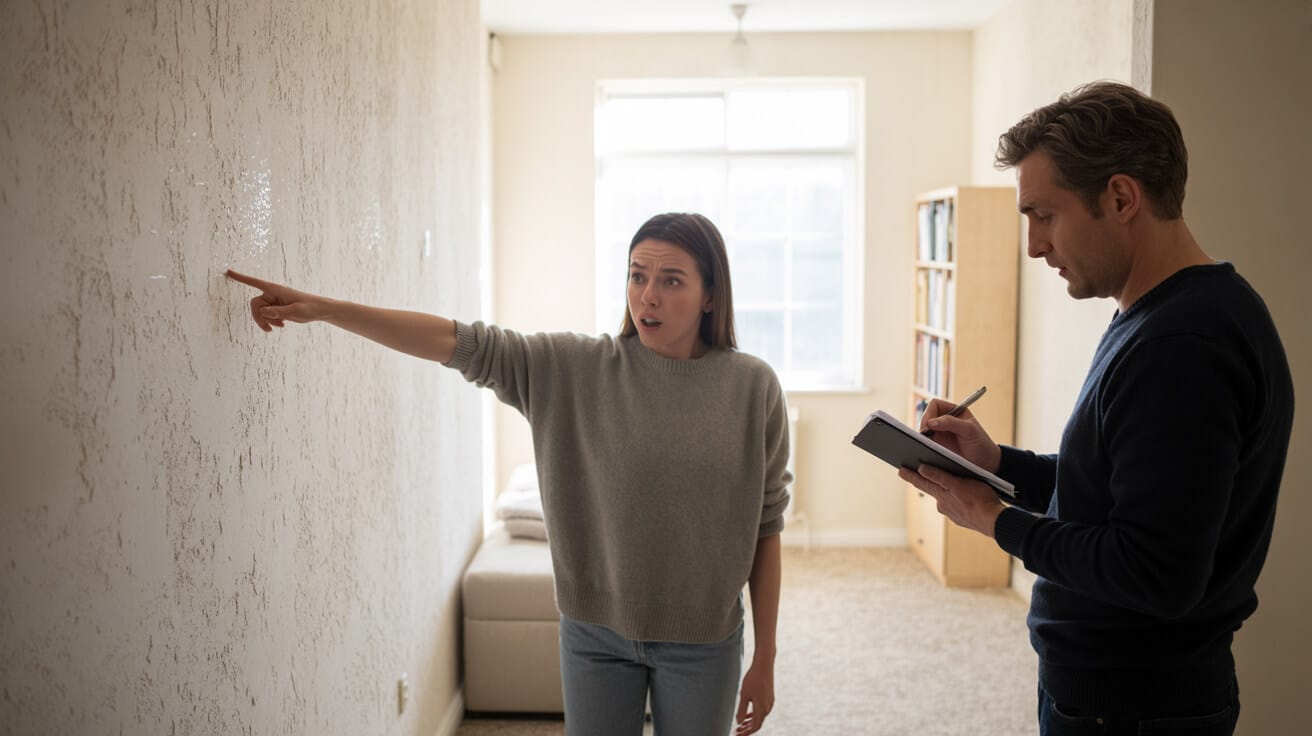 Georgian House Heating Traditional Looks With Modern Efficiency
Georgian House Heating Traditional Looks With Modern Efficiency

How Do You Heat a Georgian House Without Sacrificing Its Soul?
Few homes turn heads like Georgian properties do: their tall sash windows, handmade mouldings, and stately rooms set the scene for both ambition and anxiety. If you own or manage a period house, chances are you’ve felt the tension—where does heritage end and energy efficiency begin? Owning a slice of history brings prestige, but winter can be ruthless, and big heating upgrades risk erasing the very details that make your property special.
“True comfort means modern heat, but never at the cost of lasting character.”
Heating a Georgian house isn’t about brute force or the latest gadget. The real art is invisible: warmer rooms, lower bills, and compliance documents ready at hand—all delivered without the scars of careless pipework or surface-mounted units that jar with period plaster. Homeowners, landlords, agents, and local authorities face another burden: planning rules and conservation expectations can turn the simplest upgrade into a regulatory maze if heritage features aren’t protected or documented.
Success starts long before a thermostat is fitted. It means surveying quirks like floor voids, old timbers prone to hidden damp, or listed-structure headaches that could bite at sale or audit. The team you choose must blend traditional skill with up-to-date accreditations—think WRAS, WaterSafe, and G3 specialist tickets. When a visitor can’t tell what’s old and what’s upgraded, and your heating panel is as silent as it is effective, you’ve done more than add comfort: you’ve future-proofed your legacy.
What Problems Derail Most Period Heating Upgrades?
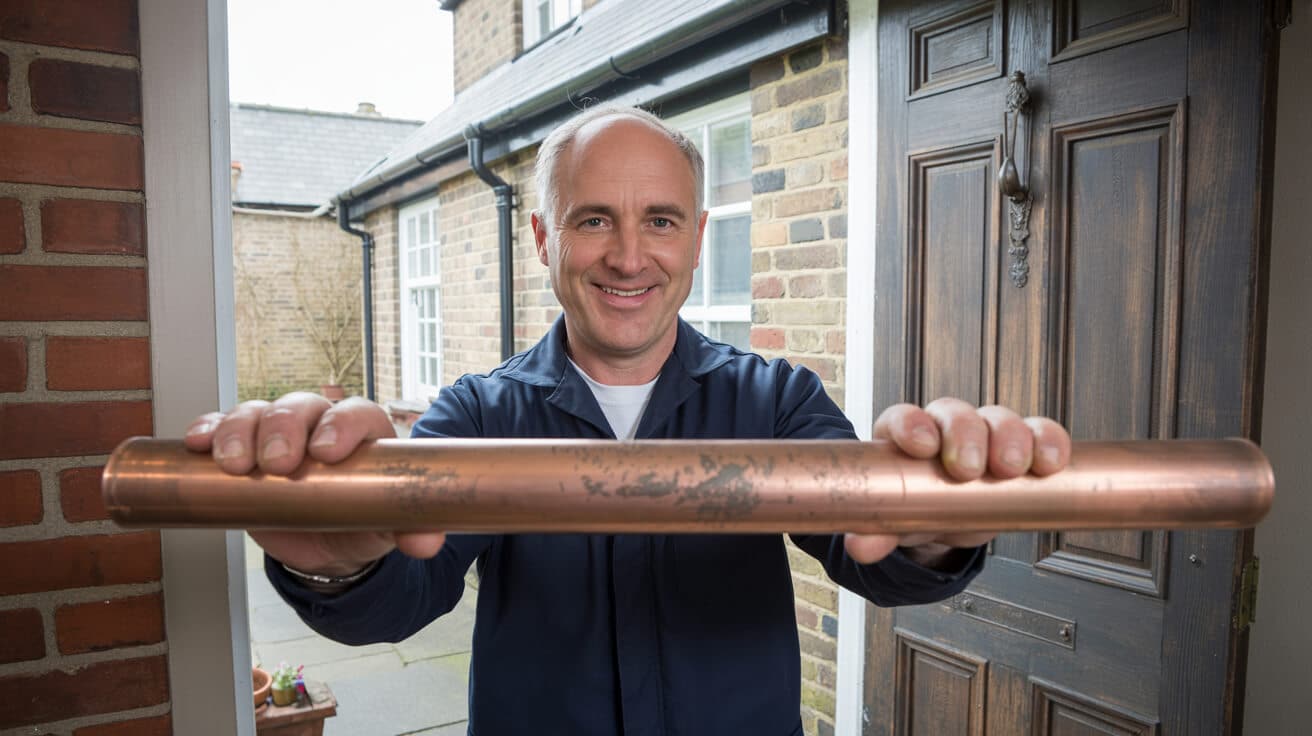
Heating upgrades in Georgian and Regency properties are rarely straightforward. Quick decisions can leave deep marks—both on your interiors and your bank balance. Many owners only realise the true cost after-the-fact: fixing damage to plasterwork, skirtings, or original floors can wipe out any efficiency savings, and failing to file the right paperwork is an open invitation for council headaches or insurance gridlock.
“Repairing period features after heating upgrades averages £2–5K per room and can impact resale value.”
So, what actually goes wrong during upgrades?
Cutting Corners Destroys Original Features
It’s tempting to rush pipework or radiator instals, but original floorboards and framing were never designed for modern systems. Too many installations notch or even saw through history—often without proper consent or records. Those shortcuts haunt resale later.
Poor Radiator Choice Spoils the Room
Standard radiators might offer quick heat, but they look out of place against original cornices or delicate wall panelling. Worse, they demand pipe runs that cut through untouched skirting or even force unsightly boxing.
Electric Heaters and Surface Damage
Surface-mounting quick-fix radiators or electrical panels risks both the visual flow and the underlying plasterwork which rarely copes well with new heating loads or cable chases.
Regulatory and Scheduling Mistakes
Upgrades often rush ahead of proper surveys, especially when property managers or agents are under seasonal pressure. Installers who “just get on with it” sometimes skip listed building consent or ignore unique damp or timber issues—leaving owners or landlords facing expensive reversal later.
“Every intervention in a listed building should be planned, documented and actively minimised.” *(Historic England, 2022)*
The Fix: Respect, Skill and Documentation
The smart path is insisting on heritage-savvy teams—installers who see period details as treasures, not obstructions. With WRAS, G3 and WaterSafe badges, and the discipline to log every move, you avoid budget spirals and future compliance drama.
Are Traditional-Look Radiators Worth It for Heritage Properties?
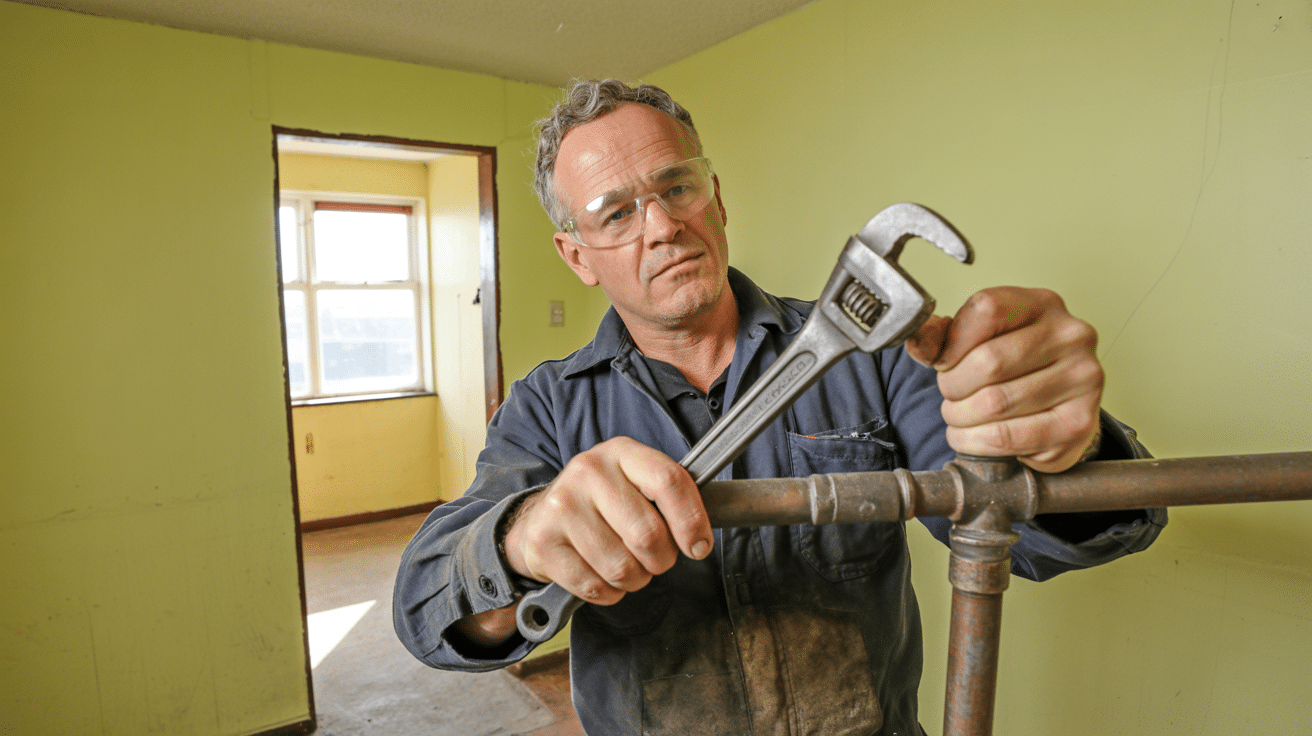
The idea that modern heating upgrades kill off architectural character is outdated. Today’s period-style radiators—cast iron, multi-column or custom-formed—offer the best of both worlds, and they win approval from planners, tenants, and proud owners alike.
“Brands like Paladin and Arroll supply customisable, era-perfect radiators—trusted by heritage architects.”
How Do They Protect Your Décor and Your Wallet?
- Period radiators are heavy, but that heft translates to slower, steadier heat, mirroring the thermal rhythm your old house prefers.
- They’re not just black or white: you can order hundreds of designer shades, dipping to match historic palettes or even bronze finishes.
- Modern smart TRVs (thermostatic valves) can be selected in discrete designs—blending perfectly with historic hardware while giving you zonal digital control. More comfort, zero visual compromise.
- Reliable makers pre-check sizes and pipe connections, so rooms aren’t butchered to fit a “standard” model.
When chosen well, these radiators quietly amplify the room’s best traits: elegant silhouettes, gentle heat that doesn’t warp floors, and a finish that feels like it’s always belonged. For clients juggling letting demands or communal tenancy splits, smart valves offer simple billing and room-by-room control without tears.
Can Underfloor Heating Actually Work in a Georgian House?
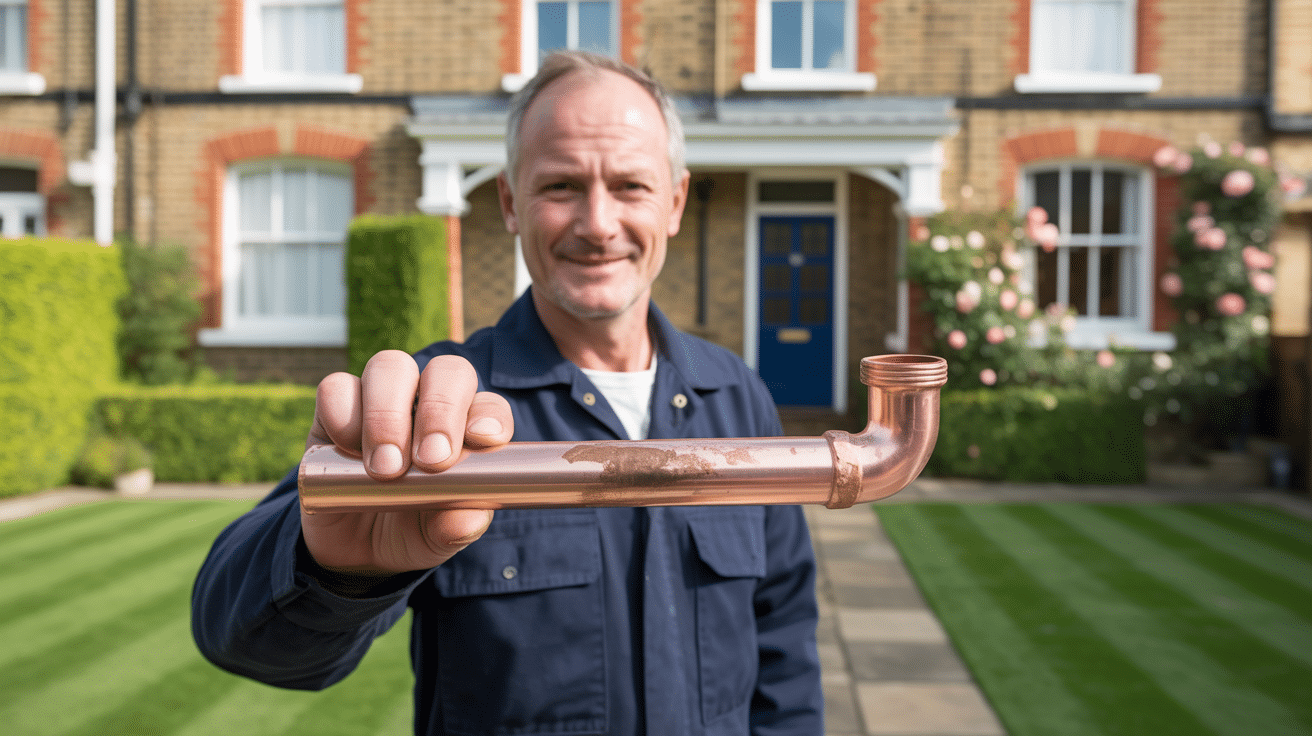
Stories of botched underfloor heating (UFH) often scare owners away: buckled floors, chilly “dead spots,” or ceilings punctured by retrofits gone wrong. But with the right design and installation, UFH can transform cold rooms into invisible comfort layers—without a trace left on period fabric.
“UFH can go between joists with metal plates or as a slim overlay—preserving floorboards and historic looks.”
What’s the Secret to Safe Installation?
- Between-joist UFH: Slim-run panels use existing spaces below original boards. Boards are tagged, lifted and carefully restored—never hacked. Metal spreader plates mean you get an even warmth without big builds.
- Overlay panels: Where floors can’t be lifted, modern heating layers sit just beneath carpets or boards, adding less than 20mm in height—often below the threshold for planning or door swing worries.
- Use inherited voids: Older service runs (from gas or bell systems) are sometimes suitable for pipe runs, avoiding fresh drilling through untouched beams.
Don’t skip the heritage survey. Proper teams look for hidden moisture, air movement, and ventilation concerns and adjust the design—pairing underfloor heating in “high-impact” rooms (think: reception, bathrooms) with radiators elsewhere for a perfectly balanced, reversible system.
“Hybrid approaches—mixing UFH in select rooms and radiators elsewhere—keep both character and comfort in tune. No one-size-fits-all.” *(UK Home Information, 2023)*
For letting agents or asset managers, remember: smart UFH can be zoned for different floors, wings, or tenancy splits—all tracked by app.
What Are Smart Heating Options for “No-Go” Pipework Spaces?

Conservation rules, tenanted blocks, or leasehold restrictions often make traditional heating impossible. Pipework can’t be chased into protected walls or floors. Here’s where modern electric radiators come to the rescue—offering flexibility, efficiency, and visuals that complete, rather than clash with, heritage spaces.
“Modern electric radiators convert nearly all their energy to heat and require almost no alteration to interiors.”
Why Electric Radiators Win in Tricky Properties
- Many now mimic period forms—think: ornate fretwork, column shapes, or even bespoke 19th century palettes.
- Installation is quick: most models run on standard spurs, so floors and walls stay untouched. Little to no trunking appears.
- App and wireless controls let owners, agents, or managers set room-by-room schedules or tenant-based access—a godsend for HMOs or multi-office lets.
- They’re easy to remove or relocate when building works or redecorations are needed (no dramas with conservation teams).
- Some models include silent running and child-safety locks, vital for family lets or care homes.
Still, even the most efficient electric system struggles if draughts and insulation leaks rob you blind. Heat is only as good as the envelope holds.
How Do Insulation and Smart Controls Complement Historic Heating?

Georgian houses leak heat like few others. Sashes, open attic voids, and undercut doors all work against you. Owners, agents, or local authorities too often defer upgrades, wary of harming period detail. But there’s a toolkit of low-impact upgrades that can close the gap between beauty and comfort:
“Subtle upgrades like roof insulation and brush-seal sash strips can save up to 40% on heating bills, with no harm to period details.”
Quick Wins Without Sacrificing Character
- Window draught-proofing: Sash brush seals, cord upgrades, plus removable secondary glazing—all but invisible to the casual eye, and fully compliant in most settings.
- Underfloor insulation: Where you can reach between joists, flexible roll membranes can shrink energy loss without touching the room above.
- Roof/Loft insulation: Hidden batts above ceilings, discreet hatches, or draught excluders behind cornices add up to serious savings.
- Front door upgrades: Drop-seal strips are unseen when open but kick in at night—major difference for entranceways.
Pairing these improvements with modern zoned heating controls (wireless thermostats, programmable TRVs, or room-by-room smart panels) lets you heat only where needed. For asset managers, these upgrades boost EPC scores and grant eligibility—no expensive overhauls required.
“Heating and insulation upgrades must prioritise reversibility and documentation—proving no harm to heritage value.” *(1st Associated, 2024)*
Why Does System Design, Certification, and Installation Skill Determine Outcomes?
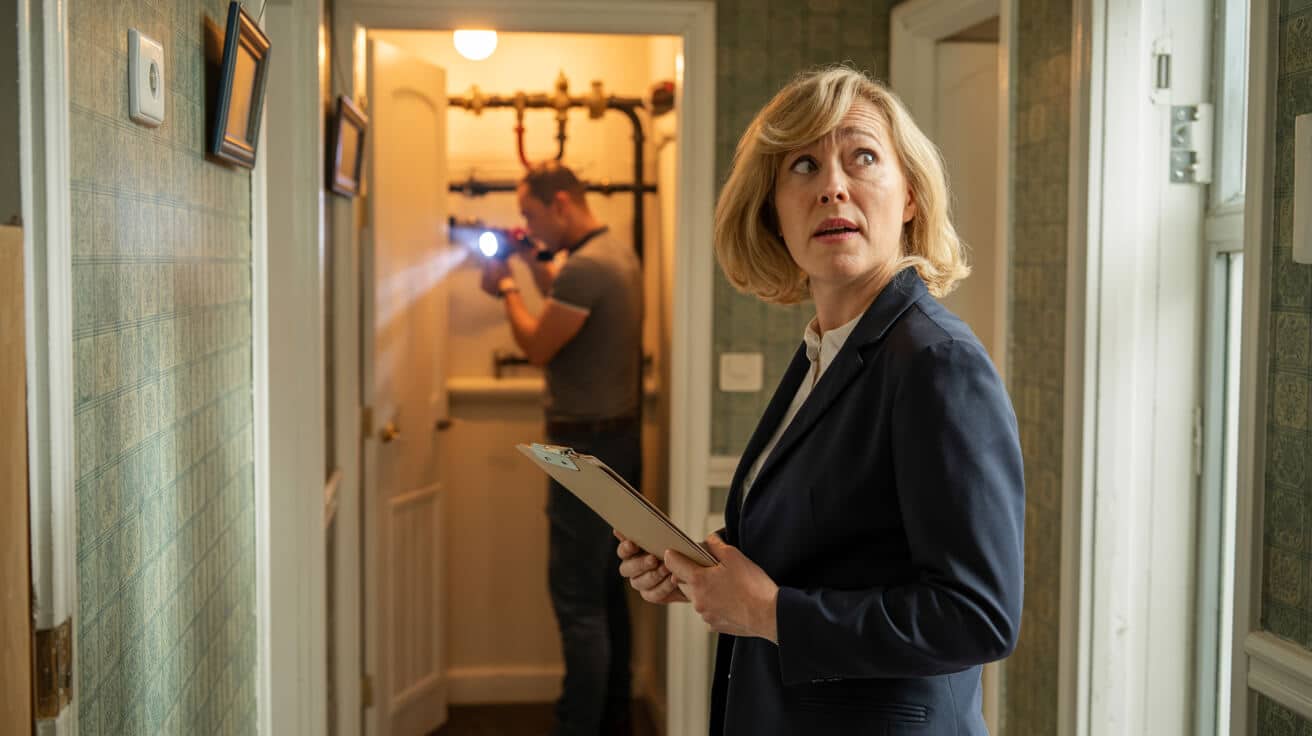
Not all “heating engineers” are created equal. The gap between a problem-free, compliant instal and a years-long headache comes down to technical and heritage know-how. Cutting-edge boilers or hybrid systems only shine when paired to a design that anticipates your building’s quirks.
“Top brands, installed by approved engineers, deliver up to 10 years’ warranty—often with no new pipework needed.”
Certified Heritage Installers: What to Demand
- Minimum intervention: The best engineers plot the heating design around your property—not the other way around. Voids, prior services, or redundant chimneys become pathways; untouched floors and walls remain just that.
- Comprehensive records: Every step is photo-logged—vital for building control, future owners, or insurance docs. For listed properties, this is your claim check.
- Paperwork discipline: Engineers with WRAS, G3, WaterSafe, and TrustMark credentials produce clean, registered certificates: the backbone for grant claims, sale, or compliance checks.
- User guidance: After instal, clear handover with all instructions, maintenance schedules, and contacts, so you’re never left adrift.
Specialist teams also handle planning notifications, liaison with heritage officers, or immobilise “red flag” risks before they threaten your budget or asset value—the opposite of a plumber who’s ‘done a few old houses’.
“Smart installers make upgrades feel invisible—your comfort goes up, not your stress.”
Why Is a Heritage Specialist Non-Negotiable?
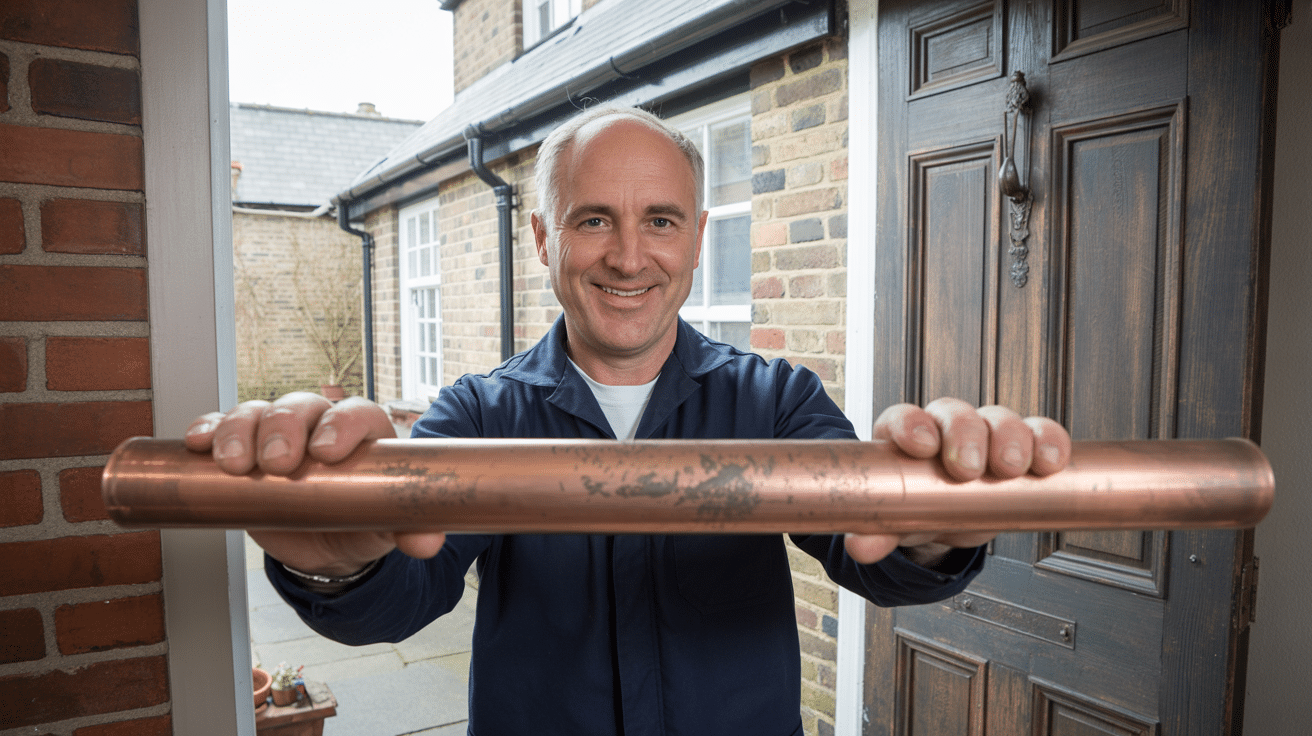
The difference between generic contractors and a true period specialist is felt in every step. Standard plumbers might skip key photos, miss subtle risks (damp, legacy pipe runs, dry rot), or fudge regulatory paperwork—at Plumbers 4U, it’s the opposite.
“Compliance is a continuous process, not just a box to tick at handover—especially for clients with managed property portfolios.”
What Does a Heritage Specialist Unlock?
- Robust pre-works survey: Every feature—skirting, board run, architrave—is noted and photographed upfront for full insurance, grants, and legacy value protection.
- Crystal-clear quoting: No surprise charges; everything is scope-fixed and pre-approved before drills turn or boards are lifted.
- Paper trail perfection: From G3 to TrustMark, from installation benchmarking to digital photo logs—every asset is fully covered for future compliance checks.
- Unrivalled aftercare: Clients receive written up-keep guides, planned reminders for system servicing, and an always-on support channel—protecting both your property and your reputation.
For managing agents and asset owners, this discipline reduces portfolio risk, supports premium premium coverage, and neutralises the “what if” of future regulation shifts. Heritage buildings upgrade quietly, respectfully—and with zero future audit anxiety.
Book Your Georgian Heating Survey with Plumbers 4U Today
Your Georgian property is more than bricks and mortar—it’s a layer of history, and every decision echoes for decades. Trust isn’t built with promises, but with heritage-trained, WRAS- and G3-certified engineers actually dispatched to period and listed homes. With Plumbers 4U, you get line-itemed, transparent quoting, photo-documented installations, and regulatory advice clear enough for a council auditor or insurer.
“Our heating solutions keep warmth invisible but comfort undeniable—so your property’s character endures.”
- Step-by-step pre-installation and compliance surveys
- Full insurance-ready reporting (photos, certificates, digital archive)
- Transparent, line-by-line quotes—no hidden charges, ever
- Expert planning advice for listed or conservation area residents
Protect your property’s storey while enjoying warmth you don’t have to see or overthink. Reach out to Plumbers 4U today—where old homes get new comfort, without compromise.
Frequently Asked Questions
Who actually reaps long-term rewards from upgrading heating in a Georgian or Regency property—and what legacy risks follow unsympathetic work?
Heating upgrades in Georgian and Regency homes best serve owners, landlords, and managing agents who prioritise asset value and occupier comfort—but only if done with respect for the building’s heritage. Ignoring sympathetic approaches can quietly erase the advantages these properties hold: original features lose their protection, listings become liabilities, and insurance or resale processes snowball with avoidable complications.
Most of all, properties stuck with “quick fix” swaps—generic radiators, exposed pipes, incompatible heating controls—see rising energy costs and a creeping decline in comfort, so draughts or cold spots grow as subtle signs that the property is drifting out of regulatory and market favour. According to Historic England, well-planned, reversible upgrades can add between 5–10% to market valuations, especially in prime city locations or popular let markets.
One overlooked heating mistake in a Georgian home can turn a coveted asset into a compliance risk and slash its market appeal.
Who faces the steepest downside?
- Owners of listed/Grade II properties who risk losing eligibility for grants or affordable insurance with undocumented work
- Landlords whose portfolio value depends on tenant comfort and rapid compliance checks—especially during regulatory escalation periods
- Managing agents and local authorities unable to demonstrate auditable improvements, exposing every unit to unnecessary enforcement action
Choosing heritage-aware solutions isn’t about nostalgia—it’s a way of locking in repair fund eligibility and ensuring every investment yields maximum return with minimum regulatory friction. Plumbers 4U provides staged documentation and asset tracking, keeping every improvement both visible in compliance terms and invisible in daily life.
What approaches consistently protect key features and deliver compliant heating in Georgian and Regency homes?
Success in heating these iconic homes isn’t luck—it’s the product of a layered process: thorough survey, suitable product selection, and careful, reversible installation.
The first move is always a comprehensive asset assessment, including fabric condition, decorative priorities, and the presence of any previous non-compliant works. The next step: choose heating options that match the era’s look while using only WRAS- and G3-certified products, focusing on cast iron or elegantly styled steel radiators, low-profile underfloor heating, and smart zoning controls.
For listed properties, strict planning consent is a live barrier—every intervention must be logged, justified, and, for structural works, fully reversible. Pipe runs may have to weave invisibly below floors or use boxed skirting. Controls should be wireless or non-invasive, and everything from valves to room stats must blend in aesthetically.
What exactly do the latest rules demand?
- Planning law requires listed-building consent and photographic proof for any lasting change, even inside some flats or subdivided houses (UK Gov, Listed Buildings Guidance 2024)
- Part G and WRAS standards: are not optional: water supply, safety, and hygiene must be totally auditable after work
- Uncertified, “invisible” interventions expose the property to retrospective enforcement, potentially halting sales or re-letting for months
Owners who direct works through specialists avoid every one of these pitfalls—and unlock the ability to phase works and futureproof occupancy. Plumbers 4U’s specialist engineers orchestrate the entire approval, instal, and handover journey in alignment with conservation, legal, and resale standards.
How does underfloor heating actually perform versus radiators in a Georgian property, and what does a compliant instal include?
Underfloor heating (UFH) in period homes delivers a rare combination: evenly distributed warmth, fully hidden from view, and optimal energy use at reduced water temperatures. In Georgian houses, where tall ceilings and draughts exaggerate cold, UFH stops warmth pooling at head height and eliminates chilly corners common with traditional radiators.
UFH instals in heritage settings require:
- Careful, reversible laying between existing joists using metal plates that conduct heat without lifting floor levels or altering thresholds
- Precise photographic logs before and after each stage, preserving listed details and confirming routing for future tenants, buyers, or auditors
- Use of vapour-permeable floor coverings and breathable insulation to prevent trapped moisture and subsequent fabric decay
The advantage is both practical and aesthetic: overlay mats as slim as 18 mm can be fitted to tiled kitchen zones, while bedrooms retain elegant cast-iron radiators, achieving authentic ambiance and modern living standards together. The very best projects customise room zoning, allowing minimal disruption and maximum energy savings.
Invisible warmth isn’t a luxury in a heritage house—it’s how you keep the property desirable and compliant at every inspection.
Not all rooms will qualify, especially on upper floors with compromised joists or sensitive finishes, but hybrid systems—UFH in open entertaining spaces, classic radiators elsewhere—are universally achievable. Routine pressure tests and digital controls wrap up the process, letting any owner demonstrate efficiency and compliance in a single dashboard.
How do you balance period charm and modern efficiency with radiator upgrades in Georgian homes?
The “best of both worlds” in radiator selection means bespoke sizing, authentic finishes, and integrated controls that respect both décor and running costs. Today’s leading period-style radiators—multi-column, cast iron, or fine-profile steel—retain heat for longer and can be matched to the original paint schemes of the era. Sash-height and depth adjustments allow radiators to seamlessly fit window bays or alcoves, avoiding any light loss.
What technical facts drive lasting results?
- Independent heat calculations ensure each room balances output against draught points, window sizes, and insulation status—preventing over- or under-sizing that fuels future complaints
- Aged brass or nickel thermostatic radiator valves (TRVs): , often barely visible, allow genuine zone-by-zone temperature control
- Pipework routing under floorboards and through boxed-in skirting means zero visible impact on panelling, cornicing, or historic carpentry
Modern radiator casings may hide integrated convector fins, multiplying output without growing physical size—ideal for rooms with limited wall space or special conservation needs. Owners should always request a full aftercare brief and “care logbook” to maintain efficiency and compliance documentation. Every upgrade by Plumbers 4U arrives with digital and paper logs for maintenance and regulatory audits.
Which invisible upgrades—insulation, controls, maintenance—deliver the most practical comfort and efficiency boost?
Much of a Georgian home’s thermal stability is delivered by improvements you’ll likely never see, but always feel. Removable secondary glazing, precision brush strips for sash windows, roof and loft insulation using vapour-permeable wool, and cleverly programmed smart controls are all now considered essentials by both conservation officers and insurance validators.
Invisible upgrades to prioritise:
- Secondary glazing: Seasonally installed and removed, boosting heat retention by up to 30% (Historic Environment Scotland, 2023)
- Wireless thermostats and zonal controls: Discreetly manage energy use, suited for guest rooms, nurseries, or home offices where needs vary day to day
- Loft insulation: Applied above historic ceilings, ensuring both comfort and the preservation of ornate plasterwork
Every measure should be staged with condition reports and benchmark tests to show value—another reason heritage-trained engineers, who provide full documentation, are preferable. Regular aftercare visits are vital, not just for warranty and compliance, but for the peace of mind that unseen upgrades haven’t compromised visual clarity or damp control.
Comfort in heritage property is the sum of subtle, reversible enhancements—never the product of visible shortcuts.
How do certifications, documentation, and trusted brands give you confidence your Georgian heating upgrades are both safe and compliant?
The difference between compliant, future-proofed upgrades and expensive mistakes lies in the paper trail and the installer’s credentials. Installations must be conducted with WaterSafe or TrustMark credentials, using only WRAS-approved and G3-certified components—each cross-referenced to its documentation and warranty status. Conservation officer sign-off, insurance eligibility, and grant applications all hinge on this audit-ready chain.
What should every upgrade journey include?
- Stage-by-stage visual logs: and asset serial sheets for every new instal or replacement
- Full handover packs detailing controls, warranties, and compliance papers, supporting both annual insurance reviews and future sales
- Scheduled aftercare reminders and photo-logged follow-ups to reinforce both system health and your eligibility for grants or tenant certifications
The paperwork behind a period heating upgrade is as important as the valves and cylinders—without it, long-term value evaporates.
Brands like Paladin for radiators and Megaflo or Gledhill for cylinders deliver up to 10-year warranties, but only if fitted and maintained by accredited specialists. Plumbers 4U handles the compliance chain from start to finish, giving owners, agents, and managers complete transparency and future resilience—transforming a regulatory risk into a robust asset for decades ahead.

